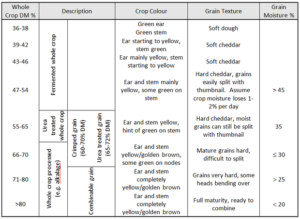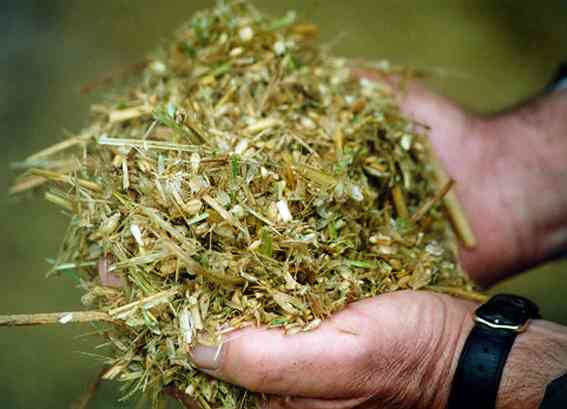Fermented wholecrop to boost winter forage stocks
2 June 2021Being a late spring, there is little silage left over from last winter and many of this year’s first cuts are reported to be light crops, raising concerns about forage stocks for the coming winter.
Despite lower first cut yields, the goal for subsequent cuts should still be to aim for quality and not to compromise on quality to gain more yield. Aim to cut just before the grass starts to head. Once headed, the grass plant declines in digestibility, dropping by 3.5 percentage points within a week, equivalent to around 0.6MJ/kg DM (or nearly 1.4 litres of milk based on a 12kg dry matter intake of silage). Once cut, ensure the recommended rate of nitrogen is applied to the aftermath, to maximise growth for the following cut or grazing.
While there is still time to make up any 1st cut deficit on subsequent cuts, cutting cereal crops early to make fermented wholecrop is a good option to help boost winter forage supplies and reduce the risk of having to purchase forage replacers or feed more straw and expensive concentrates to spare silage.
Feeding mixed forages to dairy cows can help increase dry matter intake and overall performance, as opposed to feeding just one forage. This is particularly true if silage is wet, as wholecrop can help dry up and open out the mix. This improves physical presentation of the ration and therefore intakes.
Fermented wholecrop is made when the grain is at the soft cheddar cheese stage (with no liquid present), with some green still left in the stem. The dry matter of the crop should be between 35-45%, which is about four weeks before the combining stage. At this stage, the crop will provide good levels of digestible fire and starch (20-25%) and is ideal for balancing highly digestible grass silage.
Wheat is the preferred cereal for wholecrop, being slightly higher in starch and energy compared to barley but any cereal can be used. Winter wheat can yield between 12-15T dry matter/ha, potentially more than a three-cut silage system.
Keep a close eye on grain maturation. Once the crop reaches 45% dry matter, the cereal moves to the hard cheddar cheese stage and dry matter can increase by 2% each day in hot weather. With crops over 50% dry matter, a cracker will be required on the harvester to ensure cattle can digest and fully utilise the grain. At this stage the ear and stem will be mainly yellow and the grains will be at the hard cheddar cheese stage but can still be easily split with a thumb nail (see guide).

Source: Teagasc
As wholecrop is a low sugar, and typically higher dry matter crop than grass silage, it is more difficult to ferment and is more susceptible to aerobic spoilage at feed out. Therefore, an additive is recommended to ensure good preservation and shelf-life once the clamp is open. Chop length is also important for good consolidation in the clamp. Aim for a chop length of between one to two inches maximum.
Other alternatives to ensuring adequate winter forage supplies include planting a forage crop to outwinter heifers, although time is running short to achieve good yields of later sown crops. Once the longest day is passed, the growing days start to become shorter, which will adversely affect yield potential. Alternatively, you could sow a quicker-growing crop such as Italian Ryegrass, which can be cut for extra silage or grazed. Catch crops can also be sown after silage has been cut, provided there is sufficient moisture in the ground.
If acres are not available, work with an arable neighbour. There may be an option to buy a standing crop of cereal or to grow a catch crop such as kale or stubble turnips to graze in the winter, to away winter replacement heifers. The arable farmer receives an income and benefits from returning organic matter and nutrients back to the arable land.
Sign up to the FAS newsletter
Receive updates on news, events and publications from Scotland’s Farm Advisory Service

